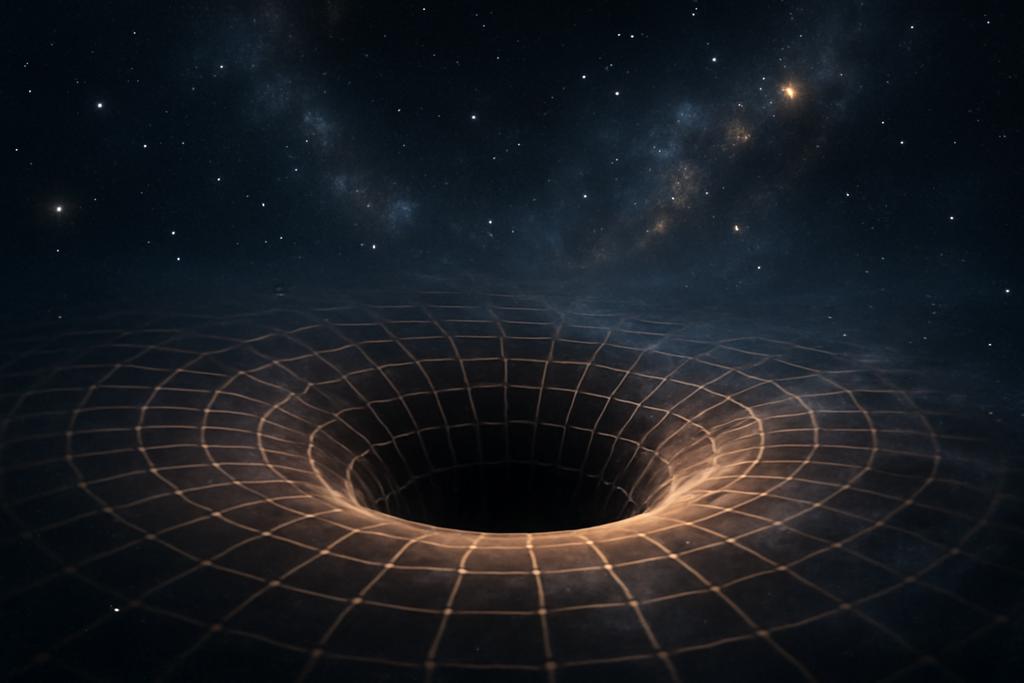Gravity’s Hidden Degrees of Freedom
Gravity, as Einstein painted it, is a smooth dance of spacetime curvature, elegantly described by general relativity. This theory has passed every test thrown at it, from the bending of starlight to the ripples of gravitational waves detected by LIGO and Virgo. But beneath this success lies a profound question: is Einstein’s gravity the only way to have gravitational waves that behave just right?
General relativity predicts gravitational waves with exactly two degrees of freedom—think of these as the two independent ways spacetime can ripple. This neat count is tied to the theory’s deep symmetry: full spacetime covariance, meaning the laws of physics look the same no matter how you move through space and time. But what if we relax this symmetry? Could there be other gravity theories that still produce just two degrees of freedom, but break some of Einstein’s sacred rules?
Breaking Symmetry Without Breaking Gravity
Jun-Cheng Zhu, Shu-Yu Li, and Xian Gao at Sun Yat-sen University in China dove into this puzzle by exploring a class of gravity theories that respect only spatial covariance—symmetry under reshuffling space coordinates—but not the full spacetime covariance. This subtle shift means time and space are treated differently, a concept that has appeared in various quantum gravity proposals, like Hořava gravity.
However, breaking full covariance usually invites an unwanted guest: an extra scalar degree of freedom. This extra mode can wreak havoc, causing instabilities or conflicting with observations. The challenge is to design a theory that breaks some symmetry but still propagates only the two tensorial degrees of freedom that correspond to gravitational waves.
The Role of the Auxiliary Scalar Field
The twist in Zhu, Li, and Gao’s work is the introduction of a non-dynamical auxiliary scalar field. Unlike a usual scalar field that evolves dynamically, this auxiliary field only depends on space and acts as a kind of background scaffold. It allows new terms in the gravitational action that are spatially covariant but not fully spacetime covariant.
Think of it like adding a fixed pattern on a dance floor: the dancers (gravitational waves) still move freely, but the floor’s pattern breaks some symmetries. The question is whether this pattern forces the dancers to gain extra moves (degrees of freedom) or not.
Hamiltonian Analysis: Counting the Moves
To answer this, the researchers employed a powerful tool called Hamiltonian constraint analysis. This method is like an accountant’s ledger for physics, carefully tracking how many independent variables (degrees of freedom) a theory truly has, after accounting for constraints imposed by symmetries and equations of motion.
They found that, in general, their spatially covariant gravity with an auxiliary scalar field has three degrees of freedom: two tensor modes (the gravitational waves we want) plus one scalar mode (the unwanted intruder). But all is not lost. By imposing two specific mathematical conditions—dubbed the 2DOF conditions—they could eliminate the scalar mode, leaving only the two desired degrees of freedom.
Two Conditions to Keep Gravity Lean
The first condition ensures a certain matrix, called the Dirac matrix, becomes degenerate. This degeneracy signals the presence of a new constraint that removes half a degree of freedom. The second condition further refines the constraints, either turning a second-class constraint into a first-class one (which removes another half degree of freedom) or generating an additional secondary constraint.
In essence, these conditions act like fine-tuning knobs that balance the theory on a knife’s edge, preserving just the right number of degrees of freedom. The researchers carefully classified these conditions and identified three branches: one where constraints are linearly dependent (no real reduction in degrees of freedom), one that leads to unphysical or trivial theories, and the physically interesting branch that yields exactly two degrees of freedom.
Concrete Example: The Two-Derivative Model
To ground their abstract analysis, Zhu, Li, and Gao applied their conditions to a concrete model built from spatially covariant monomials with two derivatives. This model is a playground where the theory’s coefficients depend on the auxiliary scalar field and the lapse function (a measure of how time flows in the theory).
By solving the degeneracy conditions explicitly, they found a unique set of coefficients that satisfy the 2DOF conditions, ensuring the theory propagates only two degrees of freedom. This result matches previous perturbative analyses but now stands on firmer non-perturbative ground thanks to the Hamiltonian approach.
Why This Matters
This work is a step toward understanding the landscape of gravity theories beyond Einstein’s. It shows that by relaxing some symmetries and introducing auxiliary fields, one can still have a consistent theory with the right number of gravitational wave modes. This is crucial for constructing alternative gravity models that might explain cosmic puzzles like dark energy or quantum gravity effects without contradicting gravitational wave observations.
Moreover, the rigorous Hamiltonian analysis provides a blueprint for theorists to build and test new gravity models, ensuring they don’t accidentally introduce ghostly or unstable modes. It’s like having a quality control checklist for the fundamental fabric of spacetime.
Looking Ahead
While this study focused on a specific class of spatially covariant gravity theories with an auxiliary scalar field, it opens doors to exploring richer models that might include dynamical lapse functions, multiple scalar fields, or parity-violating terms. Each extension could reveal new physics or subtle signatures in gravitational waves and cosmology.
As gravitational wave astronomy matures, the ability to test these alternative theories will sharpen. The work by Zhu, Li, and Gao equips physicists with the theoretical tools to navigate this exciting frontier, where gravity might still surprise us by breaking some rules but keeping its essential dance intact.
Reference: Jun-Cheng Zhu, Shu-Yu Li, and Xian Gao, School of Physics and Astronomy, Sun Yat-sen University, “Spatially covariant gravity with two degrees of freedom in the presence of an auxiliary scalar field: Hamiltonian analysis,” arXiv:2508.02466 (2025).










